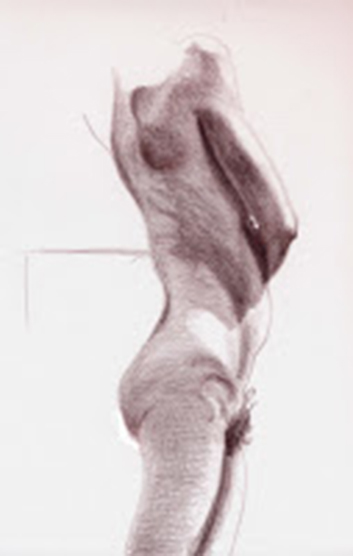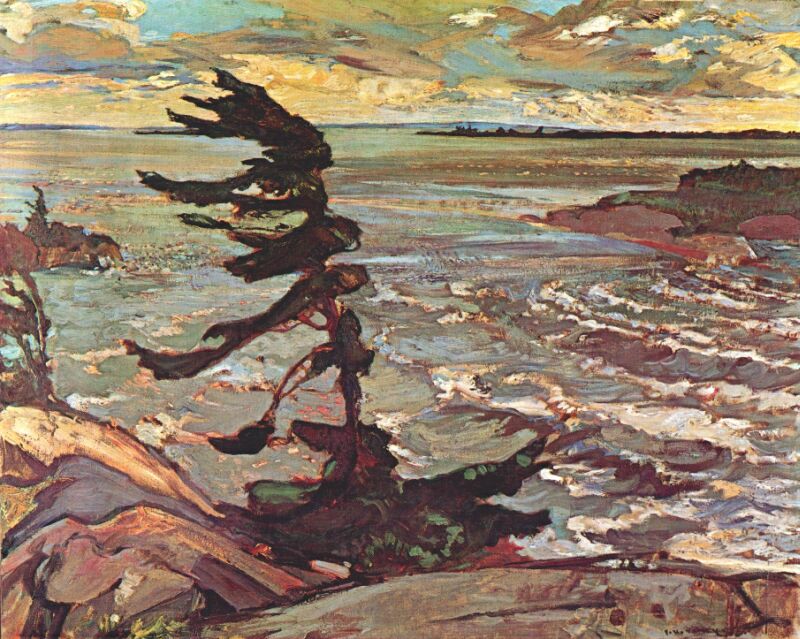Sometimes when I am drawing, particularly life drawing, time runs out and the drawing can seem incomplete. But, on a second look, it can stand as a completed drawing, despite it being unfinished in some sense. Other times, it is hard to decide. I think it is a question of intent and whether the drawing makes sense for a viewer. The life study I did, on the right, was done in about thirty minutes, in Prismacolor, and it can, just, stand on its own, I believe. I would be interested in other people's views.
Life Study - 30 minutes, Prismacolor, Jeannine Cook artist
Life study - 45 minutes - Prismacolor.Jeannine Cook artist
I did another Prismacolor study, in about forty-five minutes to draw, with this young man whose muscles are amazing, and the play of light on his back was fascinating. However, although the composition is perhaps more stable than the other life drawing, I am not sure it works as it stands. Nonetheless, I know that the next time I draw him, it will be more straightforward. Why ? Because, as Swiss essayist and writer, Alain de Botton, observed, "The very act of drawing an object, however badly, swiftly takes the drawer from a woolly sense of what the object looks like to a precise awareness of its component parts and particulars".
There is, however, another way of going in seemingly unfinished drawings. I tend to do drawings that don't leave loose ends, as it were, but there are plenty of artists who very effectively leave lines, blotches, splotches, blobs and squiggles in the drawing which actually all contribute to the effectiveness of the drawing, conveying immediacy, rhythms, drama, etc. An artist whose work I admired the first time I saw it, Lori-Gene, is a very good draughtswoman of this type of drawing. Her work, frequently combining motion, sound and sight, is a wonderful amalgam of energy. She often works with musicians and orchestras as they play, and the results convey the sense of music most successfully. The whirl of lines and marks on the paper is the perfect demonstration of the "unfinished" drawing which is beautifully finished.
Brass 1, Lori Gene, (image courtesy of the artist)















